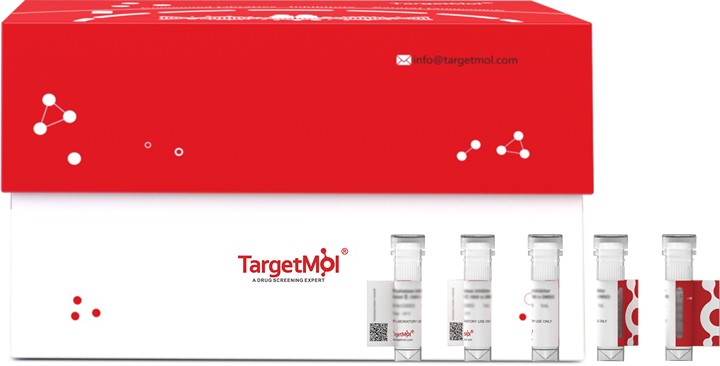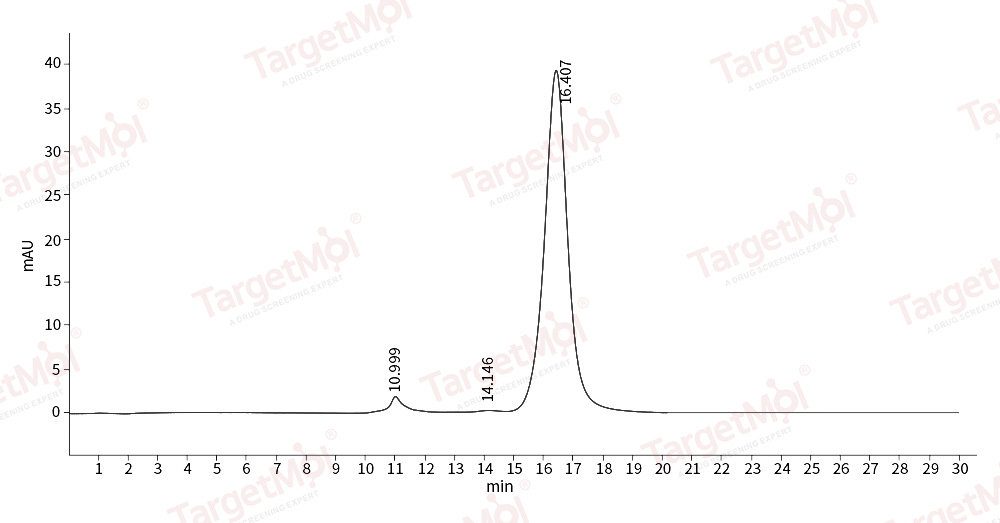Shopping Cart
- Remove All
 Your shopping cart is currently empty
Your shopping cart is currently empty

PAI-1 Protein, Human, Recombinant (His) is expressed in HEK293 mammalian cells with His tag. The predicted molecular weight is 44.2 kDa and the accession number is A0A024QYT5.

| Pack Size | Price | Availability | Quantity |
|---|---|---|---|
| 50 μg | $386 | In Stock | |
| 100 μg | $620 | 7-10 days | |
| 200 μg | $995 | 7-10 days | |
| 500 μg | $1,860 | 7-10 days |
| Biological Activity | Measured by its ability to inhibit uPA cleavage of a peptide substrate, N-carbobenzyloxy-Gly-Gly-Arg-7-amido-4-methylcoumarin (Z-GGR-AMC). The IC50 value is < 60 nM. |
| Description | PAI-1 Protein, Human, Recombinant (His) is expressed in HEK293 mammalian cells with His tag. The predicted molecular weight is 44.2 kDa and the accession number is A0A024QYT5. |
| Species | Human |
| Expression System | HEK293 Cells |
| Tag | C-His |
| Accession Number | P05121 |
| Synonyms | SERPINE1,serpin peptidase inhibitor, clade E (nexin, plasminogen activator inhibitor type 1), member 1,PLANH1,PAI-1,PAI1,PAI |
| Construction | A DNA sequence encoding the human SerpinE1 precursor (NP_000593.1) (Met 1-Pro 402) was expressed with a C-terminal polyhistidine tag. Predicted N terminal: Val 24 |
| Protein Purity | ≥ 97 % as determined by SDS-PAGE. ≥ 95 % as determined by SEC-HPLC.   |
| Molecular Weight | 44.2 kDa (predicted); 45 kDa (reducing conditions) |
| Endotoxin | < 1.0 EU/μg of the protein as determined by the LAL method. |
| Formulation | Lyophilized from a solution filtered through a 0.22 μm filter, containing 50 mM NaAc, 0.1M NaCl, pH 5. 5. Typically, a mixture containing 5% to 8% trehalose, mannitol, and 0.01% Tween 80 is incorporated as a protective agent before lyophilization. |
| Reconstitution | A Certificate of Analysis (CoA) containing reconstitution instructions is included with the products. Please refer to the CoA for detailed information. |
| Stability & Storage | It is recommended to store recombinant proteins at -20°C to -80°C for future use. Lyophilized powders can be stably stored for over 12 months, while liquid products can be stored for 6-12 months at -80°C. For reconstituted protein solutions, the solution can be stored at -20°C to -80°C for at least 3 months. Please avoid multiple freeze-thaw cycles and store products in aliquots. |
| Shipping | In general, Lyophilized powders are shipping with blue ice. |
| Research Background | Plasminogen activator inhibitor 1, also known as PAI-1, Endothelial plasminogen activator inhibitor, SerpinE1 and PLANH1, is a secreted glycoprotein that belongs to the serpin family. SerpinE1 is the primary physiological inhibitor of the two plasminogen activators urokinase (uPA) and tissue plasminogen activator (tPA). Its rapid interaction with TPA may function as a major control point in the regulation of fibrinolysis. Defects in SerpinE1 are the cause of plasminogen activator inhibitor-1 deficiency (PAI-1 deficiency) which is characterized by abnormal bleeding due to SerpinE1 defect in the plasma. High concentrations of SerpinE1 have been associated with thrombophilia which is an autosomal dominant disorder in which affected individuals are prone to develop serious spontaneous thrombosis. Studies of PAI-1 have contributed significantly to the elucidation of the protease inhibitory mechanism of serpins, which is based on a metastable native state becoming stabilised by insertion of the RCL into the central beta-sheet A and formation of covalent complexes with target proteases. Greater expression of PAI-1 has been associated with increased survival of cells and resistance to apoptosis. PAI-1 appears to influence apoptosis by decreasing cell adhesion (anoikis) as well as its effect on intracellular signaling. PAI-1, in its active state, also binds to the extracellular protein vitronectin. When in complex with its target proteases, it binds with high affinity to endocytosis receptors of the low density receptor family. The mechanisms of PAI-1 overexpression during obesity are complex, and it is conceivable that several inducers are involved at the same time at several sites of synthesis. PAI-1 is also implicated in adipose tissue development. It suggests that PAI-1 inhibitors serve in the control of atherothrombosis. |

Copyright © 2015-2025 TargetMol Chemicals Inc. All Rights Reserved.